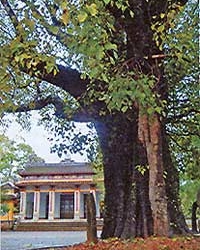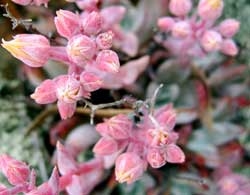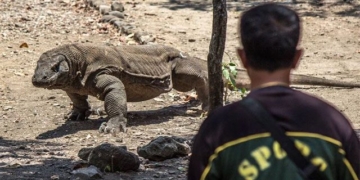Six months after being illegally cut down, the 300-year-old sycamore tree, recognized as a heritage site by UNESCO, has been “revived” by scientists.
In September 2023, England was “shocked” when a 16-year-old teenager secretly felled the famous Sycamore Gap tree located in Northumberland National Park.
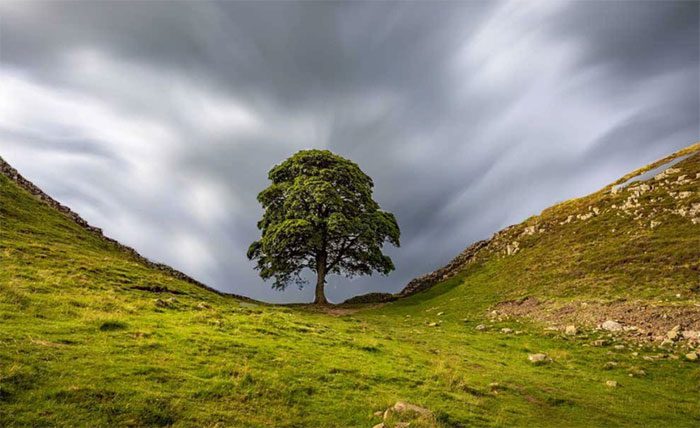
The Sycamore Gap tree, the most photographed tree in the UK – (Photo: GETTY IMAGES).
The Sycamore Gap Tree is approximately 300 years old, situated next to Hadrian’s Wall, which was built by the Romans 1,900 years ago, and recognized as a UNESCO heritage site.
The tree gained additional fame after appearing in the blockbuster “Robin Hood: Prince of Thieves” (1991), earning it the nickname “Robin Hood’s tree.” Major newspapers in the UK consider it the most photographed tree, attracting millions of visitors each year.
When it was illegally cut down, only the stump of the Sycamore Gap tree remained.
Immediately after the tree fell, a local gardener, Rachel Ryver, took action. She climbed over the wall and approached the tree to collect young branches with buds. These were the “raw materials” essential for grafting genetic copies.

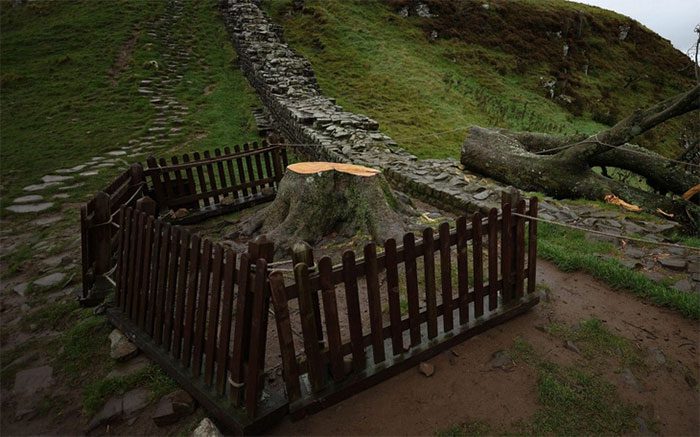
The tree after being cut down – (Photo: GETTY IMAGES).
Rachel noted that the dry air would cause the separated parts to deteriorate quickly if not “rescued” in time. A few hours later, she was at the Hexham post office sending a bag of branches and some seeds to the National Trust Heritage Centre.
Upon receiving the bag, biologist Chris Trimmer examined its contents and cleaned the samples within five minutes. Half a day later, Chris managed to graft 20 samples from what remained of the Sycamore Gap tree.
Chris grafted the living buds from the Sycamore Gap tree onto the fresh roots of a tree of the same species. Meanwhile, the seeds were also immediately sown. The seeds were carefully regulated for temperature and humidity to optimize germination potential.

The regenerated young tree – (Photo: BBC)
To date, experts from the National Trust are caring for 9 surviving grafted trees and 40-50 young Sycamore Gap trees. One of the tree shoots has grown to about 10 cm in length.
A BBC reporter recently visited the National Trust to see the young Sycamore Gap shoots firsthand. The locations of these shoots are kept secret at the National Trust to prevent the risk of vandalism.
Additionally, a team of scientists is still monitoring the site of the old tree stump to see if new shoots can emerge. It will take about three years to know the results.
If the old tree stump does not sprout new shoots, a young Sycamore Gap tree being nurtured at the National Trust will be planted as a replacement. The remaining young trees may be planted in schools or a few public locations, depending on growing conditions.
Some seeds will still be kept at the National Trust.
|
National Trust – Conserving Rare Trees The National Trust protects genetic copies of some of the most valuable plant and tree species in England. It is home to a genetic copy of the apple tree that Isaac Newton sat under while formulating his theory of gravity, as well as a 2,500-year-old cypress that witnessed the famous romance of King Henry VIII and Anne Boleyn in the 1530s. The National Trust preserves valuable gene resources, ensuring that England’s heritage trees will continue to exist, especially through events like diseases, devastating storms, or attacks. |









































